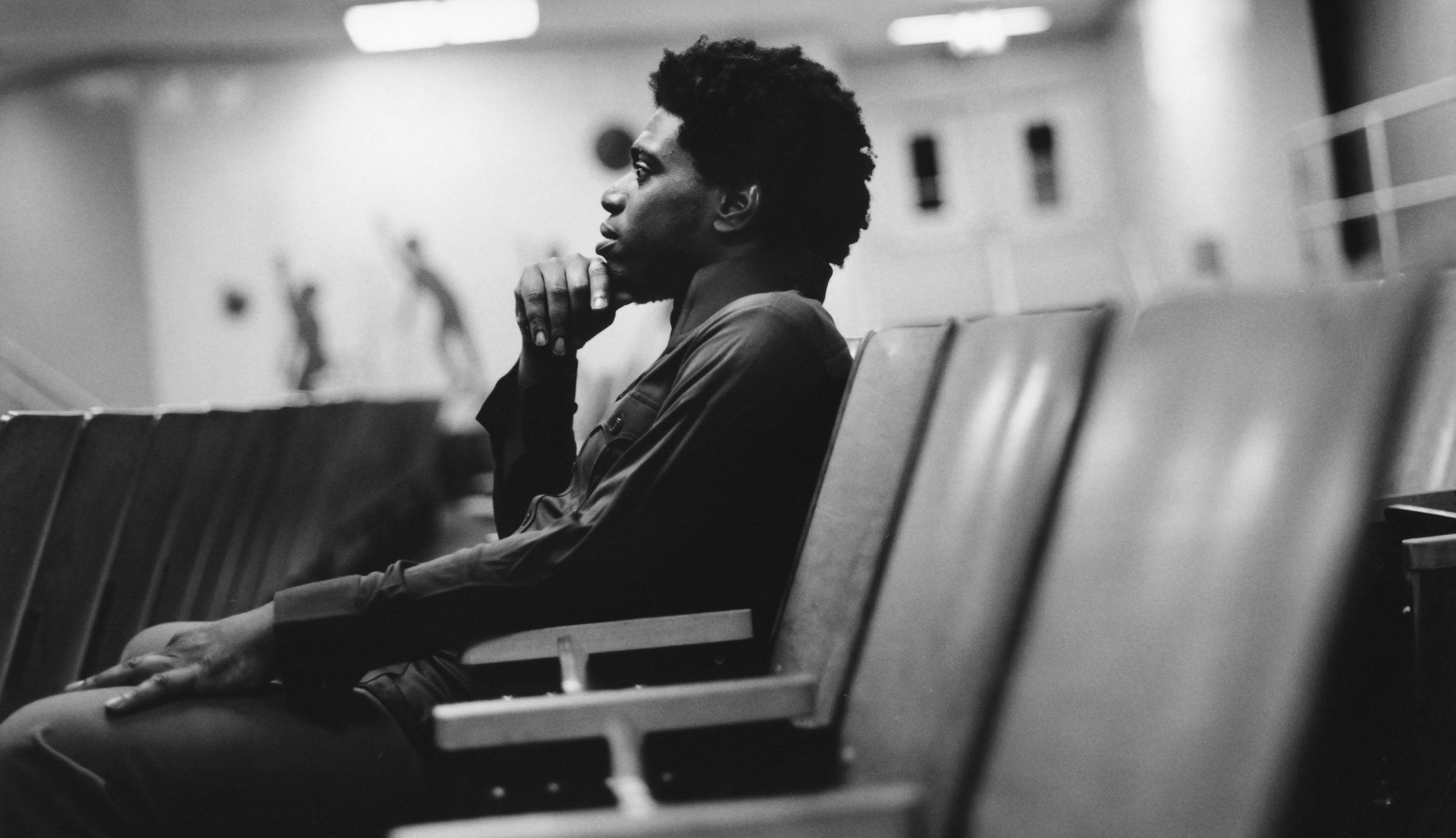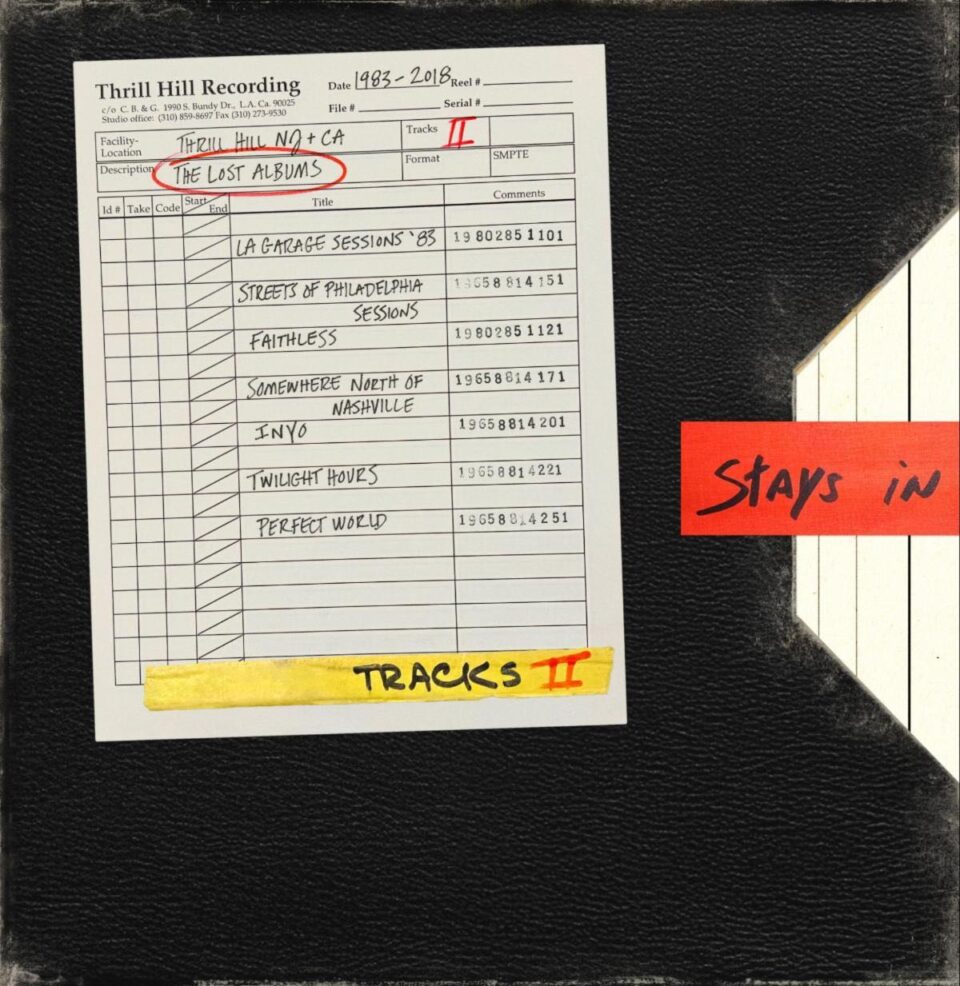Rare indeed is the album that’s both of its time and timeless—the recording that perfectly captures the mood of the moment it was birthed in, yet remains as fresh and relevant decades after its release. Marvin Gaye’s What’s Going On, which celebrated its 50th anniversary last month, is perhaps the most iconic example; Donny Hathaway’s stunning 1970 debut Everything Is Everything and Stevie Wonder’s 1976 masterpiece Songs in the Key of Life are also part of this select club. And so is Donnie’s lesser-known but equally powerful The Colored Section, which receives an expanded (almost) 20th anniversary reissue tomorrow via Motown/UMe.
Originally recorded and released in 2002, in the immediate wake of 9/11 and the run-up to the Iraq War, The Colored Section’s soulful meditations on Black history and identity, racism, consumerism, violence, spirituality, self-empowerment, and gay love still sound as vibrant, vital, and pertinent as if they were waxed yesterday. The songs take clear-eyed, open-hearted aim at issues that, for better or worse, we’re all still grappling with here in the third decade of the 21st century.
Born Donn Johnson in Lexington, Kentucky, and raised in Atlanta, Donnie grew up singing in the Hebrew Pentecostal Church, the same hybrid Jewish/Christian fundamentalist sect his cousin Marvin Gaye belonged to. After deciding in his late teens to pursue a career in secular music, Donnie soon found an artistic home for himself amid the thriving late-’90s scene that centered around the Yin Yang Café in Atlanta’s Little Five Points neighborhood; through his friend India.Arie, Donnie connected with Maurice Bernstein of Giant Step Records, who eventually signed him to the label.
Produced by Steve “The Scotsman” Harvey—and featuring contributions from a variety of heavy-duty session musicians, including Billy Preston, Al McKay, Sekou Bunch, and Bobby Watson—The Colored Section received rave reviews and spent 12 weeks on Billboard’s Top R&B/Hip-Hop Albums chart, eventually peaking at #31. Donnie followed it four years later with the equally topical (and well-received) The Daily News, though the pressures of the music industry ultimately caused him to take a step back from his recording career. But The Colored Section, often name-checked as one of the strongest albums to emerge from the neo-soul explosion of the early 2000s, endures.
Now hard at work creating a stage musical he’s calling The American Mythology, Donnie recently connected with us to look back on the message and making of The Colored Section.
When did you start writing the album’s songs? Were they all written around the same time, with a specific concept in mind?
No, they came in three stages, mostly from 1997 through 2001. The oldest song is “You Got a Friend,” which I wrote the words for when I was 18. Israel Embry, the keyboard player at my church, composed the music—so those changes and all those chords, that was his stuff. “Turn Around” and “People Person,” I started writing those in ’97 when I was hanging out at the Yin Yang. And some of the other stuff I wrote in the studio, or at least during that period.
The Yin Yang has taken on almost mythical status as far as its place in Atlanta music history. What was it like for you to hang out and perform there back in the day?
The people there were different than what I’d experienced up to that point, because I was coming from “across the street”—I came from the church to the gay club to the music club. But it was great just being able to connect on a level where stupid stuff didn’t get in the way, and have the art shine through. In that club, it was people dancing and people singing, coming up onstage and doing live improv. Singers, rappers, hip-hop artists…it was a trip! Working with them was really a dream, and it taught me a lot.
“I just felt like I had to make something to make Black people feel like they were loved, and also to let the world know that, ‘Hey! We’re here!’”
So you felt pretty accepted there, as a gay man?
Well, there was times that I felt rejected, but that just comes with life. But most of the time, it was like, “Hey, there’s Donnie! What’s up, Donnie? Oh, and he just so happens to be gay.” It was all about the art and the music, which is what it’s supposed to be!
Taken together, the songs of The Colored Section made a pretty profound statement about Black people in the United States in the early 21st century. Were you consciously thinking about the thematic links between the songs while you were writing them?
Yes. As far as the vision, What’s Going On and Songs in the Key of Life were the main influences. But it wasn’t meant to be a “statement” so much as a gift to Black people. People just think we’re complaining a lot, but we’re not; I just felt like I had to make something to make Black people feel like they were loved, and also to let the world know that, “Hey! We’re here!” But when people of other races tell me that they were inspired by it, I’m still like, “Whoa!”
Race isn’t the main subject of all the songs on there, though. “People Person” and some of the other songs are more about not giving up on loving, and for a lot of people the message that came through on “Big Black Buck” was about how we as Americans just spend and spend and spend…

As with What’s Going On, you can listen to The Colored Section today and feel like, “Damn, things haven’t really changed at all since this record was made.”
Yes, but you can say the same thing about the writing of Langston Hughes or James Baldwin, or so many other Black writers who came before Marvin did What’s Going On. We’re all talking about the same thing. I know it’s sad to say, but this is what America runs on—hate and discrimination, and making people feel like dogs. So we have to keep making these records and writing these books every generation, because we have to keep fighting; we have to keep showing people how ridiculous this is. I’m not tired of fighting, and I don’t think we’re going to get tired, because that’s what we’re supposed to do. Our parents fought for us, and they went through a lot—but what they went through could not compare to what their parents went through.
I think it’s our duty to talk about it. I mean, “trigger-happy policing” was one of Marvin’s lyrics, and we still have to talk about it because it’s still here. We want to turn our faces away, because it hurts; but it hurts a lot of other people, too, and we’ve got to stand for them.
“I know it’s sad to say, but this is what America runs on—hate and discrimination, and making people feel like dogs. So we have to keep making these records and writing these books every generation, because we have to keep fighting; we have to keep showing people how ridiculous this is.”
What do you remember about the recording sessions for The Colored Section?
Working with Steve [Harvey] was fun. He was a cool person to make the record with. And we recorded it in Zuma Beach, California, so to be able to go down to the beach and relax while you’re doing your thing, it was wonderful.
Were you present when folks like Billy Preston, Bobby Watson and Sekou Bunch were laying down their tracks?
Actually, I wasn’t. Steve recorded them while I was in Atlanta. I met most of them later—Billy Preston died before I could meet him—but I didn’t collaborate with them. Having them on my record was really something else; I didn’t know who some of the people that Steve brought in were, but Billy, Bobby Watson, and Sekou Bunch, I’d known who they were since I was a teenager!
How does The Colored Section hold up for you, nearly 20 years after its initial release? Are there any things that you’d change about it?
Well, I’d change the production a little—I’m not gonna lie [laughs]. Because the stuff Steve did on, like, “Big Black Buck” and “Cloud 9,” that really impressed me, but I really wished that the others could have been stronger. Steve is from Scotland, and over there they’re really into the soul music of the past; he wanted to make it more like that, give it a warm sound and a more “live” feel, but I wanted to make it more modern in sound.
Let’s talk a little about Marvin Gaye. You’re related to him, but you never met him, correct?
Marvin Gaye and my father are second cousins; and while I didn’t know him, we grew up singing around the same people. My pastor said, “Oh yeah, I knew Marvin when he was 15—he used to ask me how he sounded in church.” So you grow up hearing things like that and talking to your family members who knew him, and knowing that you’re kin to the man who made an iconic album like What’s Going On…it’s hard even now to accept, but I just have to appreciate it.
“Knowing that you’re kin to the man who made an iconic album like What’s Going On…it’s hard even now to accept, but I just have to appreciate it.”
Before you go, please tell us a little bit about The American Mythology.
I started working on The American Mythology 15 years ago. It doesn’t feature me, but it features my work. It’s a musical, and I’d never written a musical before. I have some actor friends who have been giving me pointers and even some compliments, and that encourages me to keep going. I’ve gone in the studio and recorded some things for it with John Roberts, who used to drum for Janet Jackson, and it’s sounding wonderful.
Thematically, how similar is The American Mythology to The Colored Section?
It deals more with talking to human beings about their problems than talking to a certain race. And I also wanted to make it fun and fabulous. It’s not about Blackness; it’s about American people, it’s about humanity. I want to speak something for America, because there is love and goodness in America. It may appear a certain way, but somebody is loving somebody, and somebody is doing something right. And we forget about that.
Do you have a projected date for its completion?
To be totally honest, I don’t, because I don’t have an investor behind it. But hopefully, with the re-release of this album, opportunities will arise. I would really like to start workshopping it in the next year; and then after the workshop, we’ll go on to the show. FL









